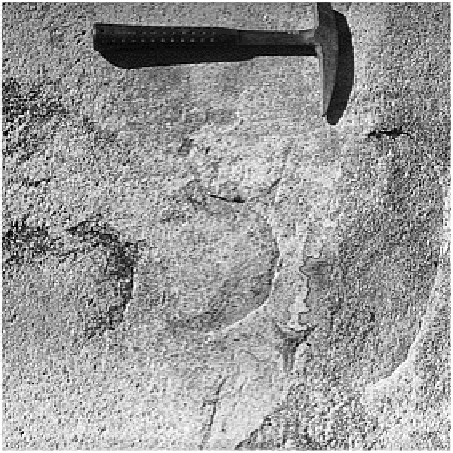Environmental Engineering Reference
In-Depth Information
Plate 15.6
Crescentic chatter marks made by the intermittent
contact of a large abrading tool.
Photo: Ken Addison.
associated with a single glacial event. Modern research draws further distinctions
between terrestrial- and tide-water-glacier deposition. Each environment stamps its mark
on the character of individual particles and facies. Subglacial debris entrainment by
regelation can build up alternating bands of dirty and cleaner ice several metres thick
(Plate 15.8, top). In this way, debris assumes an englacial position. It experiences little
attrition compared with material either in traction or moving frequently in and out of
basal ice as pressure-melting conditions change. Further englacial incorporation occurs
where basal debris is squeezed into crevasses which remain open to the bed in thinner ice
towards the glacier terminus. In the same zone, moving ice may shear over stationary ice
or along debris-rich bands, thrusting debris along the deformation plane to the glacier
surface. Supraglacial debris is sourced primarily by glacier destabilization of adjacent
rock walls and their subsequent mass wasting on to the glacier surface and, to a lesser
extent, by thrusting and melt-out of englacial debris (Plate 15.9). Glaciers may also
receive airborne dust from a variety of extra-glacial sources. Debris enters the glacier via
crevasses, entrained in meltwater and by pressure-and thermal-melting through its mass
or absorption of

